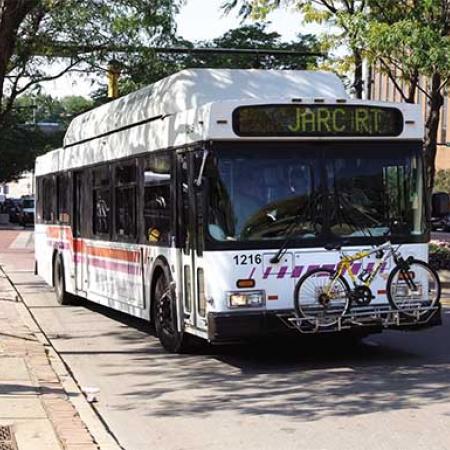The Greater Akron area has two new paths to the future thanks to the Akron Metropolitan Area Transportation Study (AMATS) Policy Committee. During its meeting on May 15, 2025, the committee approved a new multi-million-dollar, four-year Transportation Improvement Program (TIP) and a new long-range regional transportation plan, Transportation Outlook 2050 (TO2050).
The TIP is a four-year program of highway, public transit, and active transportation projects within the Greater Akron area scheduled to receive federal funds from Fiscal Year 2026 through Fiscal Year 2029. TO2050 is the area’s long-range plan that identifies regional transportation goals and presents recommendations for projects to meet identified needs over the next 25 years. The TIP and TO2050 are key elements of the regional transportation planning process within Portage and Summit counties and northeastern Wayne County.
AMATS Planning Administrator Matt Stewart explains that the agency must prepare these items as the Greater Akron area’s federally designated metropolitan planning organization. Stewart says that the TIP and TO2050 underwent an extensive public engagement process that culminated in mid-April. The AMATS Staff relied on public feedback in crafting both items.
The new TIP provides slightly less than $1.07 billion with nearly $416.7 million to be invested in area highway improvements and $526 million in regional public transit service over the program’s four-year span. The TIP also provides $8.4 million for the area’s growing active transportation network of pedestrian and cycling facilities.
One of the most significant highway projects in the TIP is the $85.8 million capacity improvement project of the Kenmore Leg on Interstate 76 in Akron, which is scheduled to begin in 2027. Other notable projects include the $21.9 million widening to four lanes of South Arlington Road in Green in 2026 and a $6 million improvement project on state Route 43 in Kent in 2029.
The area’s public transit agencies – the Portage Area Regional Transportation Authority of Portage County and METRO of Summit County – are scheduled to receive a total of more than $3.8 million to modernize their fleets in 2026. Active transportation investments include $2 million for the construction of Phase 3 of the Rubber City Heritage Trail in Akron in 2029 and $820,000 for the construction of Phase 4A of the Heartland Trail in Chippewa Township in 2026.
The long-term TO2050 presents broad planning goals for the Greater Akron area such as maintaining a safe, efficient transportation system; increasing mobility for all people; supporting regional economic vitality; and encouraging smart regional land use strategies and development patterns.
TO2050 recommends that nearly $9.4 billion be invested in area highway, public transit, and active transportation networks over the next 25 years with nearly $6.9 billion for the region’s highways and slightly less than $2.5 billion for public transit systems. The plan urges another $35 million in active transportation investments over the same period.
The plan presents 47 specific highway project recommendations that include various roundabouts, intersection improvements, and corridor rehabilitations. TO2050 presents 24 active transportation project recommendations such as new sections of the Rubber City Heritage, Lake Rockwell, and Veterans trails and additional pedestrian-related facilities across the area. The plan’s public transit recommendations urge that service be considered an integral land use planning component and that future investments preserve the existing transit network, assets, and supporting facilities.
Stewart notes that the TIP and TO2050 emphasize system preservation rather than costly and potentially unnecessary expansions. He concedes that, while maintenance of existing transportation systems may not be glamourous, it is necessary. AMATS encourages project sponsors to focus on resurfacing, pavement replacement, and bridge maintenance activities under the new TIP and plan.
“The longer that large preservation projects are delayed, the more expensive that they become. The agency believes that preservation is a fiscally prudent course for the region, and that changes to our system should improve safety and expand non-vehicular options for travel,” Stewart observes.

